1963 Auto Union 1000 SP Roadster
Kevin Newman and Rich Briggs-Pricehave a wonderful collection ofextremely desirable cars, but it is thisAuto Union 1000 SP that remainsclosest to Kevin's heart.
SMALLWONDER
READERS' CARS 1963 Auto Union 1000 SP
STORY TOLD BY KEVIN NEWMAN
PICTURES: MATT RICHARDSON
The first time I saw a 1000 SP was at the Audi museum in Ingolstadt. I had a DKW 3=6 and a DKW Junior at the time and we'd joined the DKW GB Owners Club. They do an annual tour, usually to another European country, and it was with them that we'd gone to Germany. I just fell in love with the 1000 SP Roadster in the museum, and had to have one of my own. The problem was, I couldn't find one for sale anywhere because they are so rare.
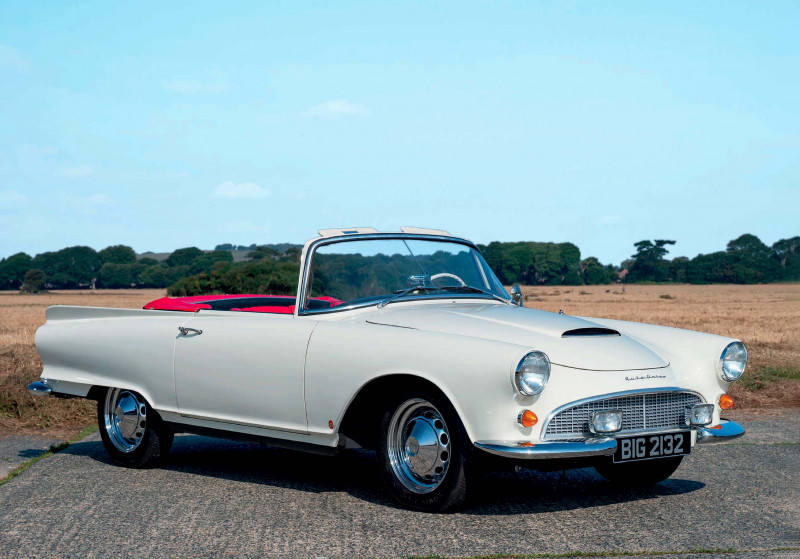
It took me a couple of years, but eventually I tracked down a black 1960 car that was for sale in Frankfurt. This was several years ago now, and we brought it back to the UK and had it restored. We kept that car here for a few years, then decided to send it to Fort Lauderdale in Florida where we spend the winters, thinking we could do the classic car scene there. It is the only known one of its type in the USA and creates a great deal of interest at shows. It has won a few prizes too, but I did miss it when we were back in the UK. Clearly the only sensible solution was to try and buy another one to keep over here!

I was lucky enough to find this white 1963 example for sale, this time in the Netherlands. So we purchased that, and it then went through a three-year restoration by a friend, Paul Collins, who is a DKW fanatic. It was in good condition to start with, but I like my cars to look as good as new. The dealer we bought the car from was horrified to learn that we planned to restore it because in his eyes it was a very original car, but to my eyes, 'original' on a 60-year-old car just means that it is tired and needs reviving. I wanted the car to be exactly as it would have been when new in 1963, as though I'd just driven it out of the showroom. I know that is not to everybody's taste, but it works for me.
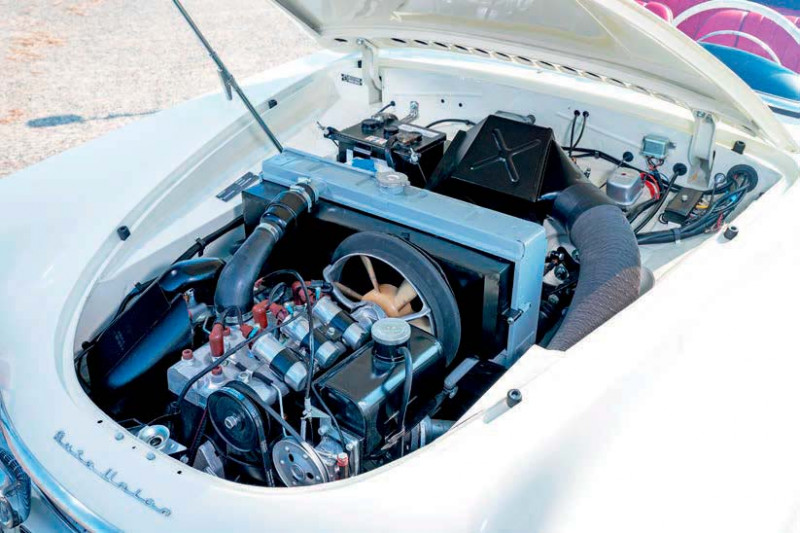
So now I am in the incredibly fortunate position of having two of these cars, as far as I know the only examples on the road in both the USA and the UK. I do like that rarity, because it is nice to drive onto a show field in a car that everybody is trying to place. It certainly gets a crowd round it wherever you go, although that wasn't the main reason why we bought it, just more of an added bonus. In fact I hadn't really realized how much of a stir one of these would cause until we took the black one to its first show. It is a little hard to explain quite why I love them so much.
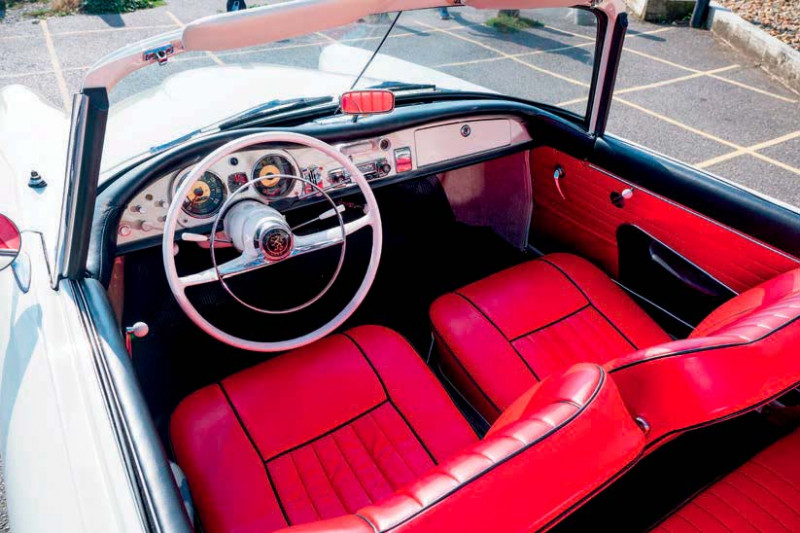
I think part of the appeal is that they are so different, but the main attraction is just that they are such beautiful cars. Lots of people do a double take, thinking initially it may be a Sunbeam Alpine. Then they see the four rings and think that perhaps it is an Audi, so of course they have to come and investigate. Even non-car people seem drawn to them, stopping to take a closer look or a photo.
People often liken the model to a mini-Thunderbird, and I have to say I think Bauer – who designed and built them for DKW – must have looked at the American design and copied some elements from it. In fact, when I sent the black car over to Florida, I did wonder if I might get some negativity from people, especially T-bird owners, but they come over with huge smiles and seem to love the fact that it is so American looking, but on a smaller scale and with such a funny little engine.
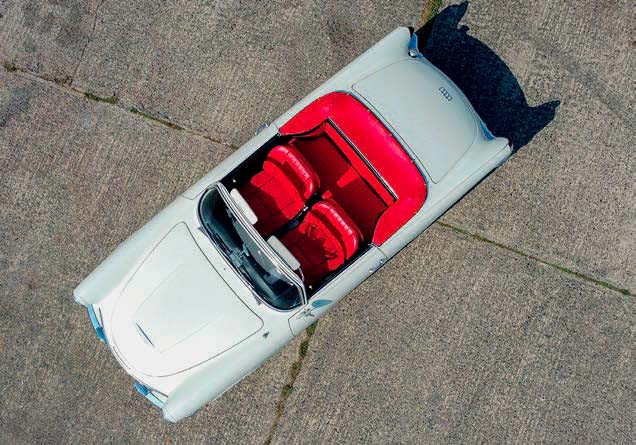
The most frequent phrase I hear from car guys is: 'I've never seen one of these before.' That is often followed by: 'I didn't know Audi made one of these.'
Then you have to explain that actually it is not an Audi, but an Auto Union, effectively a pre-Audi. Really it is a DKW, but mine wears Auto Union badges, and that was how it was sold when new. They felt at the time that the Auto Union name had more prestige from its pre-war racing heritage than DKW had from its motorbikes and small economy cars, and so was better suited to the 1000 SP design. After all, it was a very expensive car in its day.
It wasn't a big seller, only some 1640 being sold from 1958-1965. No doubt they hoped for more sales, but although it is a really good car, the two-stroke engine was becoming unfashionable by then. Perhaps Auto Union would have sold more with a four-stroke engine, but for me it is the two-stroke that helps make it so special.
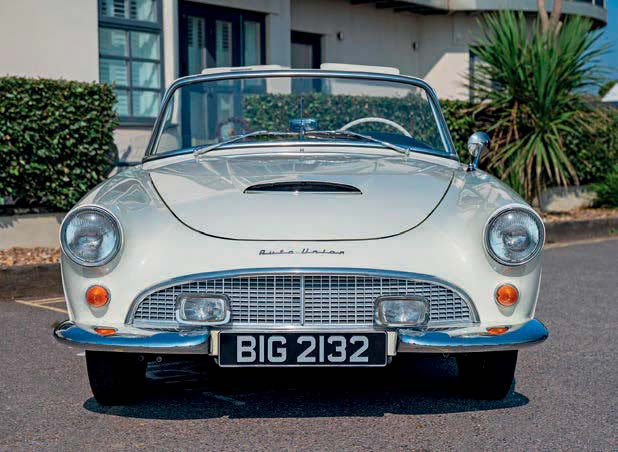
Then again, I have a history with two-strokes. My first was an NSU Quickly moped when I was six years old which I used to ride around the garden. That was followed by a number of motocross bikes during the 1960s and 1970s. I loved the power of them and the noise they made. When I had a very limited budget at 17, I bought a two-stroke Wartburg and used that to trailer my motocross bikes to events. So I grew up using two-strokes and learned how to get the best from them, how to use their power delivery to your advantage.
I think that is why many people don't get on with two-strokes, because they do require a distinct driving style. It is an engine that has to be driven hard to keep it running cleanly, and you need to be either accelerating or coasting. I know that sounds odd, but in a four-stroke you can be in the wrong gear and it will tolerate things, especially a lazy old V8 with so much torque that it accelerates without complaint from 15 or 20mph in third or fourth gear.
The Auto Union in contrast will very quickly tell you that you are driving it incorrectly! It goes incredibly well for an engine that is only 981cc, but it has a very narrow power band. It does have 55bhp though, which is not bad for a 1960s car and it really does get a move on if you drive it correctly. But don't forget that a 981cc two-stroke is probably the rough equivalent of a 1500cc four-stroke, given the extra power strokes in any given rpm. In fact, that's why Auto Union called their Sonderklasse model the 3=6, not the catchiest of names it is true, but they felt that its three-cylinder two-stroke engine gave as much smoothness and power as a six-cylinder four-stroke equivalent.
As most of your readers will know, a two-stroke engine relies on oil being mixed with the petrol to lubricate it and there is no separate oil sump or oil pump. This one is a 1963 car and has a separate oil tank and an injection system, so you don't have to mix the petrol and oil in the tank. The black car in the States is earlier and does not have this refinement. The chore of mixing oil and petrol in the correct ratios straight into the tank whenever you fill it with fuel is offset by the fact that I can use a castor-based oil. That smells absolutely fantastic when the engine is running, but sadly you can't use it with the injection system on this one.
There is a four-speed gearbox with a column change, front-wheel drive and independent suspension all round – it feels quite good on the road and handles well. The gear change is OK, but that is about as far as I would go! I think there is quite a long linkage system to reach the gearbox, so it would never have been perfect, and they can only deteriorate with use and time. Finding reverse requires a bit of a knack – it is quite a complicated route that takes a bit of doing the first time, but is fine with practice if you take your time and go slowly.
Like many two-stroke cars, the 1000 SPs came with a freewheel device. As you accelerate, it pulls just like any other car, but when you lift off the throttle, the engine just ticks over and you coast, freewheeling as though you have put the clutch in. That's because if you coasted without the freewheel, then the engine would be spinning quickly, but not getting enough lubrication since the throttle would be shut and so the cylinders would be pulling in virtually no fuel/oil mix and could seize up. That is the main reason for providing a freewheel, but it also makes for a very smooth drive. And if you lift off the throttle, it is amazing how long you can coast. It must be good for fuel too, and you can change gear in the freewheel without using the clutch. The driving style takes a little getting used to, but is very satisfying once mastered.
A car needs good brakes to cope with a freewheel of course, because you have no engine braking. On the earlier cars they fitted drum brakes all round, but our US car had been upgraded to front discs before we got it. The white UK car came from the factory with front discs.
Overall though, the 1000 SP is a practical as well as a beautiful car. There is plenty of room for two people, it is very comfortable to ride in, there is a small back seat which is perfect for our large dog and the boot is very accommodating. I tend to drive it around 60-65mph on a dual carriageway, and it feels very happy at those speeds. The factory quoted 87mph as its top speed, but while you do need to drive these cars reasonably hard to keep them running at their best, I don't want to thrash it. Getting them into the condition I like takes a lot of time and effort, so I'd quite like to keep them this way.
I don't thrash it. Getting cars into the condition I like takes a lot of time and effort, so I'd quite like to keep them this way
The modest rear seat is perfect for Kevin and Rich's dog. As often found on two-strokes, there was a separate coil for each cylinder. The 981cc engine produced 55bhp@4500rpm and was good for 87mph. The interior is exceptionally stylish, but the 1000 SP remains a comfortable and practical car to drive.
People seem to love the fact that it is so American looking, but on a smaller scale and with such a funny little engine
DKW AND THE AUTO UNION
The DKW marque can trace its automotive roots back to 1919 when Danish engineer Jorgen Skafte Rasmussen, working in Zschopau in Saxony, Germany, fitted his two-stroke engine into a motorbike and called it Das Kleine Wunder (The Little Wonder). The first DKW car was built in 1928, and in 1932 DKW merged with Audi, Horch and Wanderer to form Auto Union, with an emblem of four interlocking rings signifying the four companies.
Postwar production started with the F89 Meisterklasse, an all-steel streamlined body on a separate chassis powered by a two-cylinder, two-stroke engine. This grew in 1953 to the Sonderklasse, which in turn became the 3=6 in 1955 with a choice of two or four-door bodies, two-door coupés and both two and four-seater convertibles. The final flowering for this body was as the DKW 1000 from 1958. There was also a Monza fibreglass sports car produced in tiny numbers from 1955-58, and a far more successful Munga 4x4 from 1956-1968 designed for the German Bundeswehr.
In 1958 Daimler-Benz took over Auto Union. That same year the DKW 1000SP was introduced, first as a Coupé and then as a Roadster, built for the company by coachbuilder Bauer of Stuttgart. It lasted until 1965 and made use of the 3=6 running gear, but wore a new Bauer-designed body that many said resembled a scaled-down Ford Thunderbird. This was joined by a new and smaller Junior model, available as saloon or roadster from 1959 and evolving into the F11 and F12 in 1963. The last DKW was the F102, a monocoque design brought to market in 1963. In 1964, Daimler-Benz sold Auto Union to the Volkswagen Group, and the F102 was facelifted and given a new name – the Audi F103 series, complete with a Mercedes-designed four-stroke, four-cylinder engine.
The F12 was available as a pretty Roadster from 1964-1965 with an 889cc two-stroke. The Sonderklasse was a Meisterklasse with three cylinders. It became the 3=6 in 1955.


